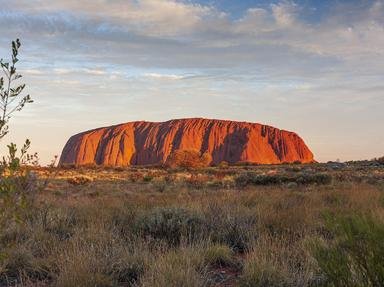Quiz Answer Key and Fun Facts
1. These people call themselves Anangu. Their lands extend across what is now the South Australia and Northern Territory border, and some way into Western Australia. In the 1950s, many of their people died from radiation sickness after the British government tested nuclear weapons at Maralinga. In the early 1980s they won back freehold title to parts of their traditional lands, including, in 1983, Uluru and Kata Tjuta. Who are they?
2. These people are the traditional owners and caretakers of the Sydney region. Though this word means "from this place", it has been proudly adopted by members of the Cadigal band and others in the region since invasion to refer to themselves.
3. These people's traditional country straddles both sides of the Murray River in the Echuca region. Cummeragunja Station sits on their land, and parts of it were handed back to them in 1983. People from this nation living at Cummeragunja (some by force, some by choice) walked off it in 1939 in a legendary protest against conditions there. A native title claim by these people - the first for Victoria - was rejected by the High Court in 2002, to great public outcry. Famous members include singers Jimmy Little and Lou Bennett, and the painter Lin Onus.
4. This place is an island in the Torres Strait. Perhaps its most famous inhabitant was Eddie Koiki Mabo, whose landmark 1992 test case in the High Court overturned the legal fiction that Australia was 'terra nullius' (empty land) prior to European colonisation.
5. These people are the traditional owners and caretakers of the area now known as south-west Western Australia. This word, in various forms, has been a self-referential name for the diverse groups of south-west peoples since before European invasion, and also refers to their common language. Famous members include playwright Jack Davis and novelist Kim Scott.
6. Members of this nation staged a famous seven-year strike at Wave Hill Station in the Victoria River region of the Northern Territory. The strike, or walk-off, which began in 1966, was initially protesting the appalling working and living conditions for the station's Indigenous workers, but ultimately it was about land justice. These people finally won back part of their land in 1975.
7. This word is found in numerous languages of the south-eastern part of the continent, and means 'person'. However, more commonly today, the word is used to mean any Indigenous person from the south-east, particularly those living in urban areas.
8. A 2001 feature film depicted a story about these people, focusing on the adventures of one boy. Their traditional lands cover a large area in the north-east corner of Arnhem Land in the far north of the Northern Territory. Famous members include 1992 Australian of the Year Mandawuy Yunupingu and other members of the band Yothu Yindi, and the artist David Malangi, whose artwork appeared on the original Australian one dollar note.
9. This name is synonymous with a prominent legal decision that allowed for the coexistence of Indigenous people's native title land-use rights with the land-use rights of pastoralists. These people took their case against the Queensland government on this matter to the High Court in 1996, and won. Their traditional lands are on the western side of Cape York.
10. Which of the following lists represents peoples from the Lake Eyre and desert regions of South Australia?
Source: Author
Phyllis_n_Jean
This quiz was reviewed by FunTrivia editor
Leau before going online.
Any errors found in FunTrivia content are routinely corrected through our feedback system.
